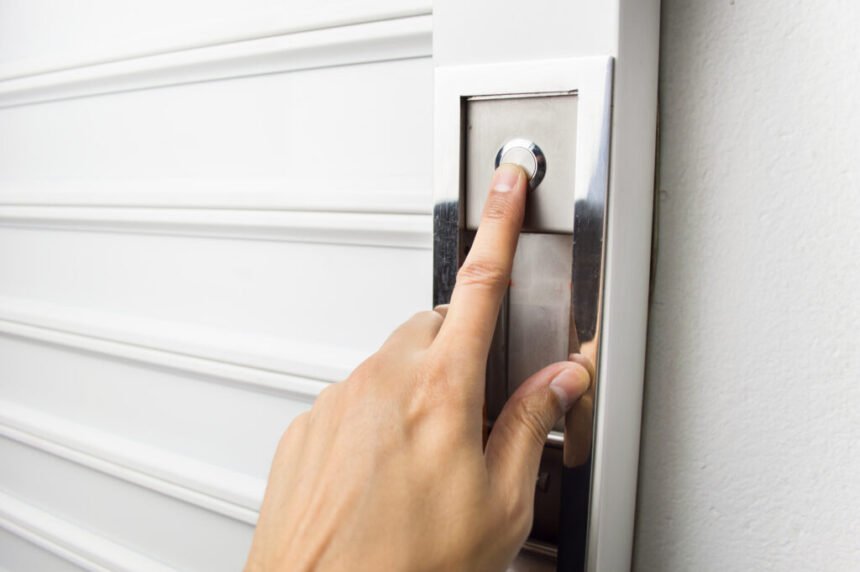For many homeowners, the garage door is just a convenience—a way to park the car and store tools. But in reality, it’s one of the largest entry points into your home. A weak or poorly installed garage door can become an open invitation to intruders. In fact, security experts often point out that burglars target garages first, knowing they can find easier access compared to front or back doors.
A quality garage door installation doesn’t just look good—it creates a solid barrier that’s difficult to bypass, while also improving safety, energy efficiency, and property value. The key is getting the installation done right the first time.
How Poor Garage Door Installation Compromises Security
Weak Points in the Frame and Tracks
When a garage door isn’t aligned properly, it can leave gaps or loosen over time. Misaligned tracks make it easier for someone to pry the door open with a simple tool. Even a few millimeters of space is enough for a determined intruder to start working.
Flimsy Materials and Poor Anchoring
If the frame isn’t securely anchored, a strong kick or a few hits with a crowbar can cause it to bend. Thin panels or cheap metals are also easy to dent or cut, giving intruders a quick way inside.
Faulty Locking Mechanisms
Some poorly installed doors don’t allow the locking system to fully engage, leaving the latch vulnerable. Others may have exposed lock components that can be tampered with in seconds.
Security Benefits of a Professional Garage Door Installation
Precise Fit and Alignment
Professional installers ensure the garage door panels, tracks, and frame fit perfectly. This tight fit eliminates leverage points for prying and ensures smooth, secure movement.
High-Quality Hardware and Materials
A good installer will recommend reinforced steel, aluminum, or composite panels with strong hinges, brackets, and rollers. These materials resist bending, cutting, and forced entry.
Upgraded Lock and Access Systems
Modern garage doors can integrate smart locks, keypad entry, and rolling code technology that changes the access code every time the door operates. This makes code-grabbing devices useless.
Beyond Security: Other Benefits of Proper Garage Door Installation
Improved Energy Efficiency
An insulated garage door, installed with weatherstripping, can keep out drafts and reduce heating or cooling loss. This is especially valuable if your garage is connected to your home.
Quieter Operation
Poor installation can make a garage door rattle, scrape, or screech every time it moves. A professional fit ensures quiet, smooth operation—especially for automatic garage doors.
Longer Lifespan for the Door and Opener
When tracks are aligned and springs are balanced, the opener motor doesn’t have to overwork. This reduces wear and extends the life of your system.
Common Problems Avoided with Expert Installation
Misaligned Tracks
Tracks that are out of alignment cause friction, strain the motor, and create security gaps. Professionals use precise leveling tools to ensure perfect alignment.
Unbalanced Springs
Torsion and extension springs need correct tension to operate safely. Improper tension can cause sudden door drops or make it easier for someone to lift the door manually.
Inadequate Weatherproofing
Without proper sealing, rain, wind, and pests can enter. This not only damages stored items but can weaken the door frame over time, making it less secure.
Choosing the Right Garage Door for Security
Steel Garage Doors
Strong, durable, and hard to breach. They can also be insulated for better energy control.
Composite or Wood-Clad Doors
Offer an attractive appearance with a solid core for strength. These are heavier, which makes forced entry harder.
Reinforced Automatic Doors
Combine convenience with security, especially when paired with motion sensors and automatic locking systems.
Key Features to Look for in a Secure Garage Door Installation
Reinforced Panels and Frames
Look for multi-layered steel or other reinforced materials that resist dents and forced entry.
Advanced Locking Systems
Deadbolt-style locks or electronic smart locks prevent easy tampering.
Rolling Code Openers
These change the access code each time the door operates, blocking code-grabbing attacks.
Maintenance Tips to Keep Your Garage Door Secure
Regular Inspections
Check hinges, springs, and locks for wear. Even the strongest door can become weak if parts loosen over time.
Lubricate Moving Parts
Keeping rollers, hinges, and springs lubricated reduces friction and prevents premature wear.
Test Safety and Security Features
Make sure motion sensors, locks, and remotes work correctly. Replace batteries and update security codes as needed.
Conclusion
Your garage door is more than just an entrance for your car—it’s a critical security barrier. Poor installation can create vulnerabilities that criminals exploit, while professional installation provides a solid defense, smooth operation, and long-term savings.
By investing in quality materials, precise alignment, and advanced locking systems, you protect not only your garage but your entire home. When it comes to security, cutting corners on garage door installation is a risk you simply can’t afford.


